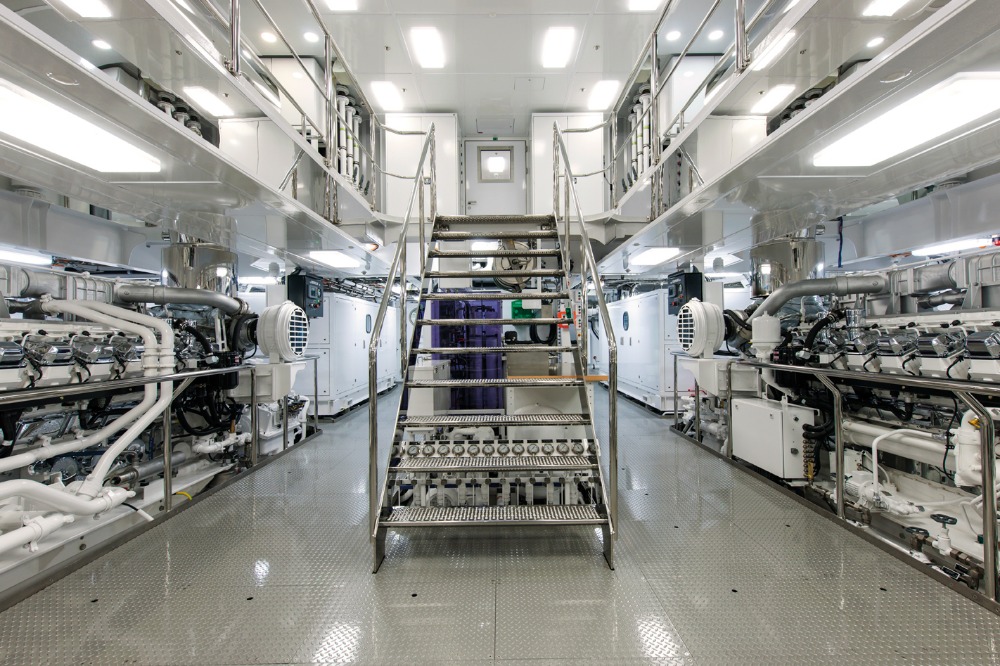Built to last
Is the use of tried and trusted commercial vessel specifications for superyacht designs a prudent move?
The fact that no two owners are the same really does keep the superyacht industry on its toes. Every buyer has a totally different set of requirements, and while there is no such thing as ‘universal appeal’ from any product or service combination, one thing is for certain: ownership should make sense and be rational and logical to that client in their own individual circumstance. It should fit the exact mould for their perception of ‘value’.
There is undoubtedly a new breed of owners that view value differently and want the same experience but at a more justifiable price. They don’t care if their hull is matt instead of shiny, or if their engines are yellow instead of white, or if the handrails in their engine room are painted instead of polished stainless steel. And they simply don’t want to be paying unnecessarily for these so-called ‘luxury’ elements.
Earlier this year at The Superyacht Design Forum (TSDF), held in Design Centre, Chelsea Harbour by The Superyacht Group, Patrick Coote revealed that NAUTIQ family office had secured the rights to work alongside certain Northern European commercial builders to adapt their engineering platforms for the superyacht sector, with yacht-design company Vripack as specialist consultants.
Coote says the superyacht industry has a focus on extreme, custom engineering solutions that are driven by pure aesthetics, however, commercial vessels are designed to operate in harsh conditions 52 weeks per year. “They’ve got a job to do and money to earn – whether they are fishing vessels, coastguard vessels or platform-supply vessels,” explains Coote. “So if someone wants to use the engineering platform for the 20th iteration of a coastguard vessel, every little optimisation has been made and any teething problems have been ironed out.”
I’ve worked with clients who are adamant that it’s not a superyacht unless you can eat your dinner off the engine-room floor. Conversely, there are clients who say, ‘Why on earth am I paying so much extra money to have white engines instead of blue when it does nothing whatsoever to increase my enjoyment on board?
Coote recalls a recent experience with a client who had built a 50m yacht at a commercial yard. “We were sat on his boat in Sardinia and he said, ‘We’re sitting here in the same bay as that guy over there, drinking the same wine and watching the same sunset. He paid €100 million for his vessel. I paid a fraction of what he paid.’ He was explaining how much more logical his solution was and how much smarter he had been because he had a more capable vessel for a fraction of the cost.”
If you have a lot of shiny paint, you have to keep it shiny, and if you have a lot of varnished surfaces, you have to keep them varnished. “I’ve been around vessels with clients who have said, ‘Why is there so much that needs constant polishing and shining? Surely that just means the crew is cleaning all the time’, and we’ve said, ‘Yes, it does’. And they say, ‘Well, I’d rather my crew were spending time teaching my kids windsurfing than polishing handrails because that makes a lot of sense’.”
During our conversation, Coote reminds me regularly that this concept isn’t for everyone – there are people who are all about the high-gloss varnishing and aesthetics. Therefore, I ask him what the compromises are, if any, of using commercial vessel engineering platforms for superyacht designs. “The compromises are only compromises if you view them as compromises,” he answers. “There are clients who want shiny hulls, white engines and technical spaces finished like operating theatres.
“Indeed, I’ve worked with clients who are adamant that it’s not a superyacht unless you can eat your dinner off the engine-room floor. Conversely, there are clients who say, ‘Why on earth am I paying so much extra money to have white engines instead of blue when it does nothing whatsoever to increase my enjoyment on board?’.”
Our role, as an industry, is to create an increasingly rational argument for owning a superyacht and meeting the expectations of clients. There are more and more clients who still want to go to amazing places and do great things, but they don’t want to spend double in the process.
This article will appear in full in issue 191 of The Superyacht Report.
NEW: Sign up for SuperyachtNewsweek!
Get the latest weekly news, in-depth reports, intelligence, and strategic insights, delivered directly from The Superyacht Group's editors and market analysts.
Stay at the forefront of the superyacht industry with SuperyachtNewsweek
Click here to become part of The Superyacht Group community, and join us in our mission to make this industry accessible to all, and prosperous for the long-term. We are offering access to the superyacht industry’s most comprehensive and longstanding archive of business-critical information, as well as a comprehensive, real-time superyacht fleet database, for just £10 per month, because we are One Industry with One Mission. Sign up here.
NEW: Sign up for
SuperyachtNewsweek!
Get the latest weekly news, in-depth reports, intelligence, and strategic insights, delivered directly from The Superyacht Group's editors and market analysts.
Stay at the forefront of the superyacht industry with SuperyachtNewsweek




